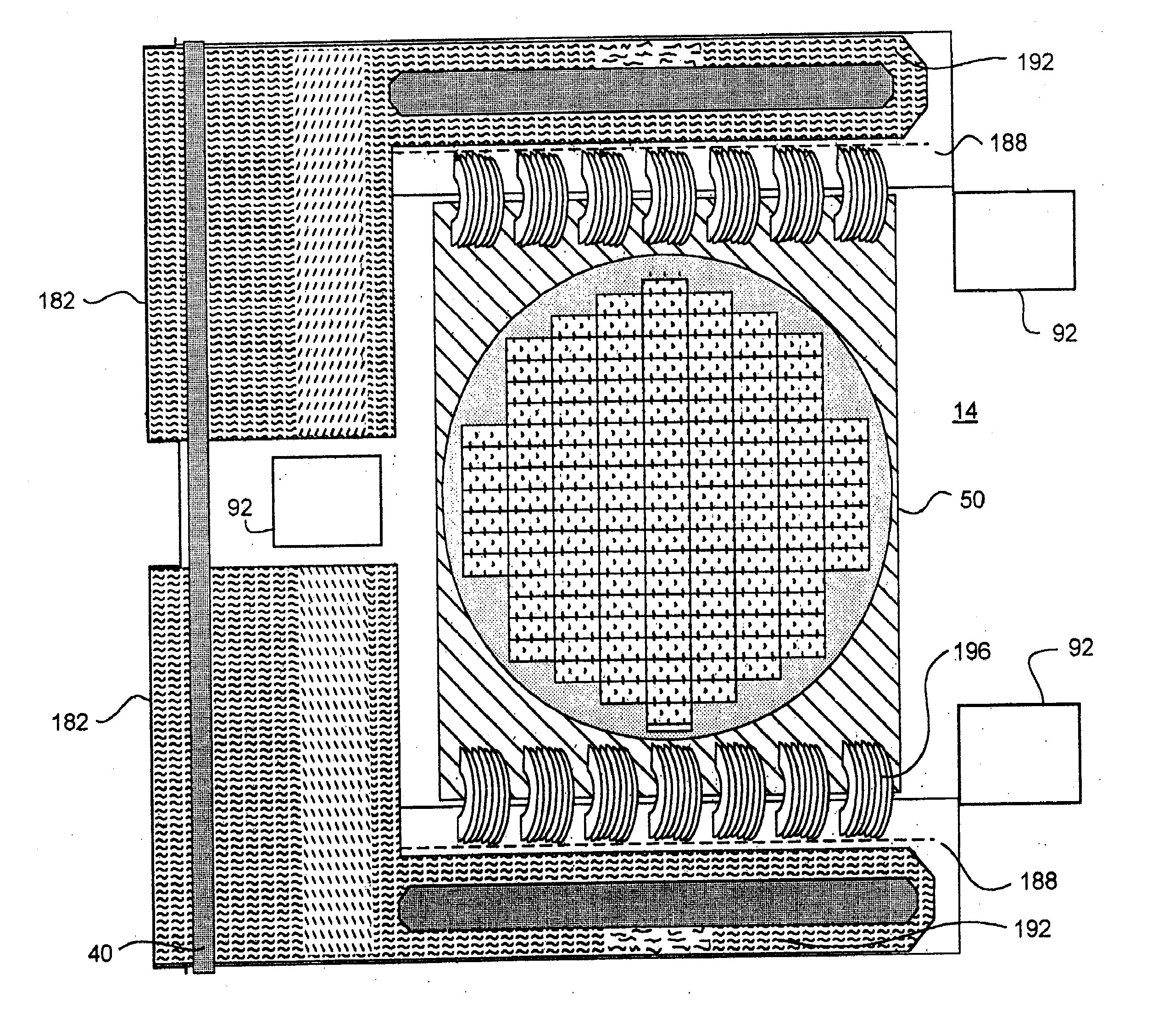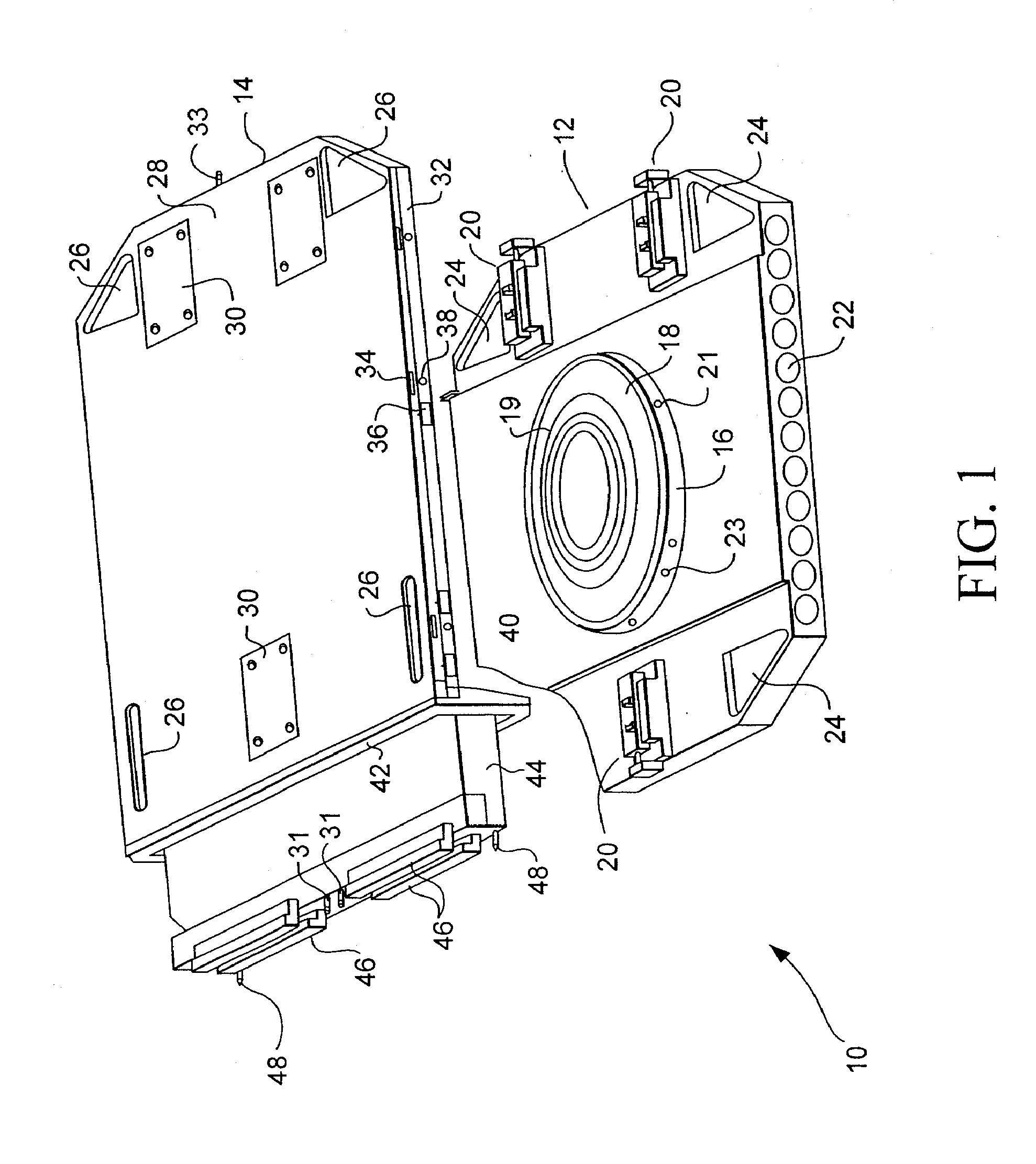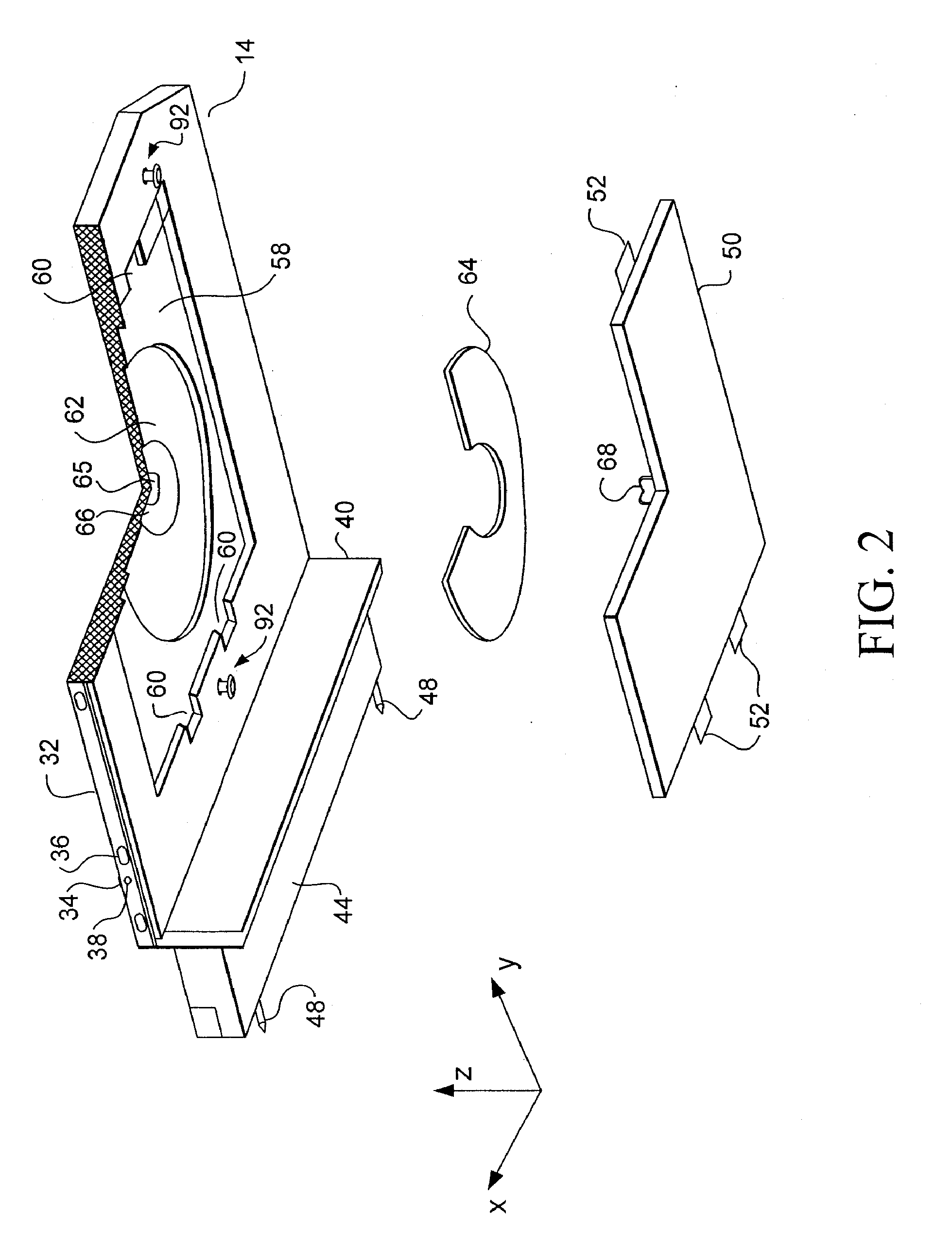Wafer Burn-In and Test Employing Detachable Cartridge
a detachable cartridge and wafer technology, applied in the field of wafers, can solve the problems of circuits (ic's), prone to fail early in their projected lives, and loss of added packaging costs,
- Summary
- Abstract
- Description
- Claims
- Application Information
AI Technical Summary
Benefits of technology
Problems solved by technology
Method used
Image
Examples
Embodiment Construction
.”
BRIEF DESCRIPTION OF THE DRAWINGS
[0020]FIG. 1 is a perspective view of a wafer-level burn-in and test cartridge according to the invention;
[0021]FIG. 2 is a partially cut away and exploded perspective view of the probe plate of the cartridge shown in FIG. 1;
[0022]FIGS. 3 and 4 are two views of a leaf spring for use in the cartridge of FIG. 1;
[0023]FIG. 5 is a partial cross sectional view through the cartridge of FIG. 1;
[0024]FIG. 6 is a cross sectional view of the mechanical connecting device of the cartridge of FIG. 1;
[0025]FIG. 7 is a top view of the lower portion of the connecting device of FIG. 6;
[0026]FIGS. 8A to 8D illustrate the actuation of the mechanical connecting device of FIGS. 6 and 7;
[0027]FIG. 9 is a schematic view of the relationship between the male connector and the jaws of the mechanical connecting device of FIG. 6.
[0028] FIGS. 10 to 12 are plan views of alternative configurations of the jaws of the mechanical connecting device of FIG. 6;
[0029]FIG. 13 ...
PUM
 Login to View More
Login to View More Abstract
Description
Claims
Application Information
 Login to View More
Login to View More - R&D
- Intellectual Property
- Life Sciences
- Materials
- Tech Scout
- Unparalleled Data Quality
- Higher Quality Content
- 60% Fewer Hallucinations
Browse by: Latest US Patents, China's latest patents, Technical Efficacy Thesaurus, Application Domain, Technology Topic, Popular Technical Reports.
© 2025 PatSnap. All rights reserved.Legal|Privacy policy|Modern Slavery Act Transparency Statement|Sitemap|About US| Contact US: help@patsnap.com



